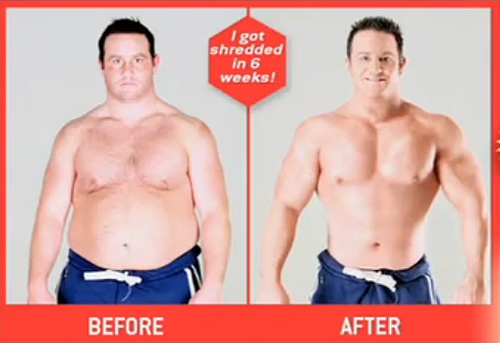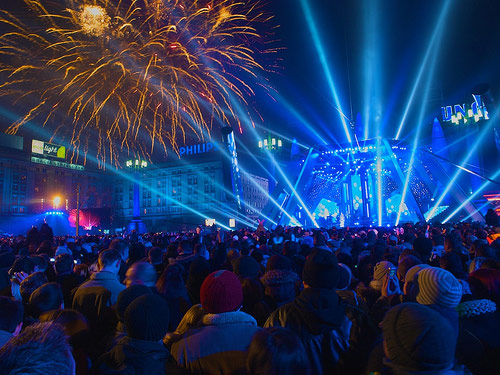 |
Posted: 09 Mar 2012 11:17 PM PST We all love the rush of an amazing concert, whether we’re dancing along to the beat or moshing in the pit. But many of us like to capture the moment, quite literally, and record our experience. However, it’s hard to get decent photographs with compact digital cameras. Dark lighting, flashing lights, and constantly moving musicians make it difficult to photograph. If you’re willing to lug around a DSLR cameras and the right interchangeable lenses, you can take some pretty awesome shots. First you’ll need the right equipment. The standard lens to use is a 70-200mm f/2.8. This will be fast enough to take shots and has a great telephoto range. If you’re a beginner, you can get away with a 50mm or an 85mm, but you’ll have to make up for distance by moving around a lot to get closer. A wide angle lens really isn’t necessary, unless you’re looking for a picture of the entire band and the crowd. The stage will always be dim so you need to compensate for that light. You should be shooting in a high ISO and a wide aperture. It’s good to stay in the ISO range of 1600 to 3200 (sometimes higher if the camera can handle it without too much noise) and not dip below an f/5-6. However, be aware that these settings will create a small depth-of-field range and higher noise levels. The key is to be flexible and quick when taking your pictures. It’s also important to increase your burst rate. The more frames you can shoot per second, the better because lights will be flashing and musicians will be moving. Now that you understand some of the settings, how can you get the best possible pictures from your locations? It’s not all about technicality. First and foremost, you must watch the performers. Notice how they like to move on stage, where their favorite places to stand are, what are their signature moves and facial expressions. If you can photograph these quirks, it will make for a beautiful shot. Once you learn their moves, anticipate them. Be ready to compose the picture when the guitarist leans back for his guitar solo. Go behind the scenes with a professional concert photographer (for those of you reading this by email you can see the video here): Don’t just focus on the people, compose pictures around instruments, props, and lighting. The line of a guitar looks best at certain angles. Take notice if your musicians are right or left-handed so you can choose which angle is best. Be on the look out for clutter though. The stage is filled with speakers, cables, mic stands, and any other electronics to make the show work. Try not to get these objects in the shot and never position yourself directly in front of a singer unless you want a mic in front of his mouth. Lastly, be nice to them and you’ll likely get your own mini performance as the musician looks right at your DSLR cameras lens. About the Author: http://www.photo4less.com can answer all of your photography needs, if it’s a new camera, bigger lens, flashes, Nikon cameras, Canon SLR cameras, filters, shop digital cameras and even dark room equipment – we are fully stocked and ready to deliver your purchase. For Further Training in a Similar Industry:Check out Nightclub Photography 101; a complete guide on how to become a professional club photographer. This book explores a little known and often secretive niche in for photographers and the knowledge provided within can also be applied to other difficult lighting and posing situations.It can be found currently discounted here: Nightclub Photography 101 Go to full article: How to Take Concert Photos What are your thoughts on this article? Join the discussion on Facebook or Google+ Article from: PictureCorrect Photography Tips |
Posted: 09 Mar 2012 10:08 AM PST One of the major debates in photography at the moment concerns the use of Photoshop or similar tools for manipulating the look of images. The issue ranges from photojournalists editing out ascetically unpleasing elements from news images to the manipulation of models in fashion magazines. Discussion: If you were offered good money to photograph before and after weight loss photos in the same day, how would you handle the situation? Have you encountered any other difficult ethical decisions as a photographer? Join the discussion: In this short video, photographer Rick Shaff, shows us just how easy it is to produce misleading images, in particular before and after shots, commonly used in advertising from diet programs to muscle building drinks (for those of you reading this by email you can see the video here). So easy it is using today's advanced software that Rick demonstrates a before and after shot actually taken on the same day. For the first shot, an average looking model is asked to pose at his worst, stomach loose, bad posture etc. The with the help of a make up artist, the same model is reshot with a better posture and flat stomach. Then using some fairly simple Photoshop techniques, our average Joe is instantly transformed into a musclebound hunk, without going near an exercise machine or taking a protein drink.  Before and After Photos: Shot on the Same Day Go to full article: Ethics in Photography What are your thoughts on this article? Join the discussion on Facebook or Google+ Article from: PictureCorrect Photography Tips |
Tags:
Photography Learning






0 comments:
Post a Comment